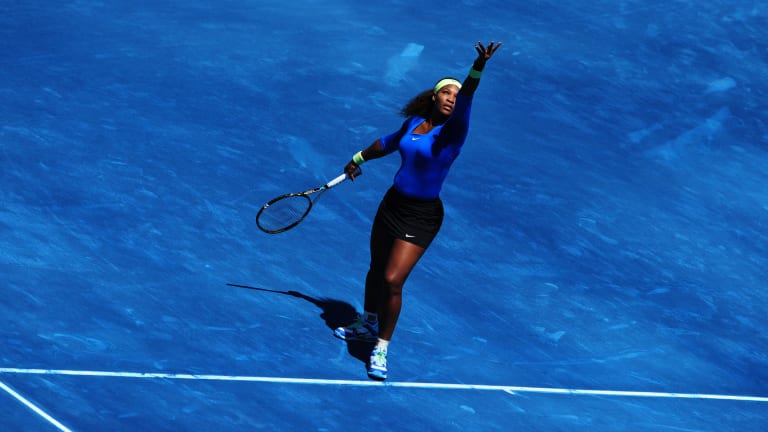Madrid, Spain
The Volley: Blue clay, best-of-three—can Madrid’s Cradle of Innovation lead to more changes in tennis?
By May 06, 2022Madrid, Spain
After final-round heartbreak, Casper Ruud takes his biggest step forward yet in Madrid
By May 04, 2025Madrid, Spain
Casper Ruud captures first Masters 1000 title of career in Madrid
By May 04, 2025Madrid, Spain
Aryna Sabalenka's Madrid win makes a bigger title in Paris look more possible than ever
By May 03, 2025Madrid, Spain
Aryna Sabalenka claims third Madrid title by leveling head-to-head with Coco Gauff
By May 03, 2025Madrid, Spain
Jack Draper vs. Casper Ruud: Where to Watch, Madrid Preview, Betting Odds
By May 03, 2025Madrid, Spain
Jack Draper closes out Lorenzo Musetti in another dazzling display to reach Madrid final
By May 02, 2025Madrid, Spain
Casper Ruud reaches final in Madrid, now a win away from biggest title of career
By May 02, 2025Madrid, Spain
Aryna Sabalenka vs. Coco Gauff: Where to Watch, Madrid Preview, Betting Odds
By May 02, 2025Madrid, Spain
Jack Draper vs. Lorenzo Musetti: Where to Watch, Madrid Preview, Betting Odds
By May 01, 2025The Volley: Blue clay, best-of-three—can Madrid’s Cradle of Innovation lead to more changes in tennis?
Celebrating the 10-year anniversary of the wackiest week in tennis history, positing why the sport is slow to embrace change, and offering ideal innovations yet to come.
Published May 06, 2022
Advertising
Advertising

"That Nadal and Djokovic both (relatively) underperformed but went on to make the final of Roland Garros lent credence to their complaints: it’s not me, it’s blue."
© Getty Images
Advertising

Serena Williams slid past the blue-clay complaints to win the Madrid title in 2012, but others were less impressed.
© 2012 Getty Images